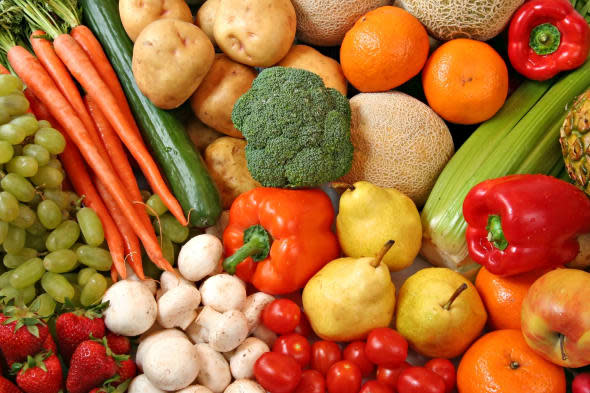Fibre for weight loss

Despite the claims of the detox diets, fads and slimming aids, there really is no 'miracle' weight loss pill, but if you're serious about losing weight, increasing your daily fibre intake is a good place to start. Here's why and how you should up your day-to-day consumption.
Related Searches
How it aids weight loss
One of the key attributes of fibre that can help a dieter's cause is that it makes you feel full, and when you're not hungry, you are far less likely to reach for that bag of crisps or chocolate biscuit. Research has shown that eating high-fibre, water-rich foods such as vegetable broths, salad, fruit and veggies allows you to eat the same weight of food and feel satisfied with far fewer calories. What's more, because fibrous foods take longer to chew, it gives your brain plenty of time to get the 'I'm full' message, and therefore prevent overeating.
How much do I need?
The recommended daily fibre intake for adults is 18g per day, but research by nutritionist Susan Roberts, from Tufts University in the USA, found that those who eat 35g to 45g each day are less susceptible to hunger pangs when dieting, and lose more weight than people who are lacking fibre in their daily diet.
Even a little more can make slimming easier though. In a two-year study at Brigham Young University in Utah, scientists discovered that boosting fibre consumption by 8g for every 1,000 calories consumer led to weight loss of 4.5 pounds, no matter how low the fibre intake was at the beginning of the research.
If your current diet is lacking though, you'd be wise to add fibre gradually to avoid bloating and an upset tummy, and drink plenty of water as you up your intake.
Easy high-fibre swaps
Experts are largely agreed that adding more fibre to a healthy balanced diet can help to shed those excess pounds, so what should you be eating to increase your daily intake? Well, there are plenty of simple food swaps that will do the job without depriving you of your favourite meals, and reducing the hunger pangs that can lead to unhealthy snacking.
For instance, instead of that glass of OJ in the morning, opt for the whole fruit and you'll be well on the way with 3g of fibre. Couple that with a tasty bowl of porridge for a further 4g of the good stuff, and feel free to add some fresh raspberries to the breakfast bowl - just one cup will boost your fibre intake by 8g.
%VIRTUAL-AFCSponserAds%
Choosing whole grains instead of refined carbs also makes a big difference, so swap white rice for brown and white bread for the wholegrain variety. A cup of brown rice and two slices of wholegrain bread provide 4g each of fibre. Nuts are a great choice for that mid-morning or afternoon snack, so instead of the crisps or chocolate, enjoy a handful of almonds, which pack a 4g-per-ounce fibre punch. And to create a hearty, filling evening meal, add legumes to the mix. The likes of lentils, chickpeas and kidney beans are naturally high in fibre, providing as much as 30g per 100g consumed.
So when it comes to losing weight, you've really got nothing to lose by increasing the fibre in your diet - it'll help to banish those hunger pangs, keep your digestive system in tip-top shape, and even help to protect against serious health issues like heart disease and type 2 diabetes.
Has a fibre-rich diet helped you to lose weight? Leave your comments below...




